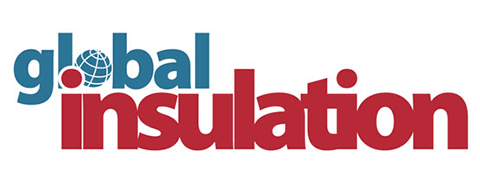Insulation industry news from Global Insulation
DuPont to launch extruded polystyrene foam insulation product with lower greenhouse gas emissions
17 July 2020US: DuPont plans to launch new extruded polystyrene foam insulation products in its Styrofoam brand with reduced global warming potential (GWP) from the start of 2021 to meet its 2030 Sustainability Goals and comply with adopted and upcoming state and provincial hydrofluorocarbon (HFC) regulations throughout the US and Canada. The company also expects a reduction in embodied carbon to be reflected in an updated Environmental Product Declaration (EPD), which will be available with the new products.
"We are taking a thoughtful, phased approach to launching this latest Styrofoam innovation to ensure we are providing a sustainable, code-approved solution that does not sacrifice the performance our customers have come to trust," said Tim Lacey, Global Vice President & General Manager, DuPont Performance Building Solution.
US: The chief executive officers (CEO) of 13 US companies, including BASF and DuPont, are lobbying the President and Congress to enact business-led climate change legislation. This initiative, known as the CEO Climate Dialogue, urges the government to put in place a long-term federal policy as soon as possible, in accordance with a set of six guiding principles. The group aims to build bipartisan support for climate policies that it says will, “… increase regulatory and business certainty, reduce climate risk, and spur investment and innovation needed to meet science-based emissions reduction targets.”
Companies involved in the CEO Dialogue include BASF, BP, Citi, Dominion Energy, Dow, DTE Energy, DuPont, Exelon, Ford Motor Company, LafargeHolcim, PG&E, Shell, and Unilever. Four environmental groups have also supplied input to the initiative. These are the Center for Climate and Energy Solutions, Environmental Defense Fund, the Nature Conservancy and World Resources Institute.
The six principles include: ‘significantly’ reducing US greenhouse gas emissions; allowing an effective timeline for reductions that will enable capital intensive industries to adjust in an ‘economically rational manner’; instituting a market-based price on carbon; making the policies durable and responsible; doing no harm to the competitiveness of the US economy with particular attention to carbon leakage; and promoting equity. Specifically the initiative says that US policy should ensure the country is on a path to achieve economy-wide emissions reductions of 80% or more by 2050 with ‘aggressive’ short and medium term emissions reductions.
“DuPont is pleased to be part of the CEO Climate Dialogue and support its guiding principles to accelerate the development of federal policy on climate change. At DuPont, our science and innovation is inextricably linked with sustainability practices that deliver specialised materials that contribute to a safer, healthier, more sustainable world. We believe strong, consistent policy measures and a cohesive regulatory environment are needed to accelerate the transition to a low-carbon economy and foster innovation, investment and economic growth,” said Marc Doyle, CEO-Elect of DuPont.
DuPont launches Tyvek Thermawrap R5.0 insulating housewrap
06 January 2016US: After two years of research and development, DuPont has launched 'an industry first:' insulating housewrap.
"This is arguably the most important introduction in our product group in a long time," said Jim Ash, new Business Development Manager for DuPont, to Remodelling magazine. "It's taking us into the insulation business, which is a big strategic push for us, and hopefully the first of many. All the while, our goal is to help build durable houses and mitigate risk - we haven't deviated from that."
Tyvek Thermawrap R5.0 comprises DuPont's Tyvek housewrap bonded to an insulation blanket. Ash said that Thermawrap R5.0 provides builders with another alternative to insulating homes from the outside. The goal is to offer a net effective R-value of R-5.
DuPont said that the Tyvek on the outside of the blanket works the same as if it was installed on its own by keeping air and bulk water out of walls, but also serves as a breathable barrier allowing moisture vapour to escape to the outside. In addition, DuPont said that the blanket increases the temperature of the sheathing, which decreases the chance for interstitial wall condensation in heating climates. "This reduces the likelihood of getting moisture vapour inside the walls," said Ash.
The insulation blanket is made of proprietary fibres, including 20% pre-consumer recycled Tyvek. The product is available in 4x40ft rolls.




